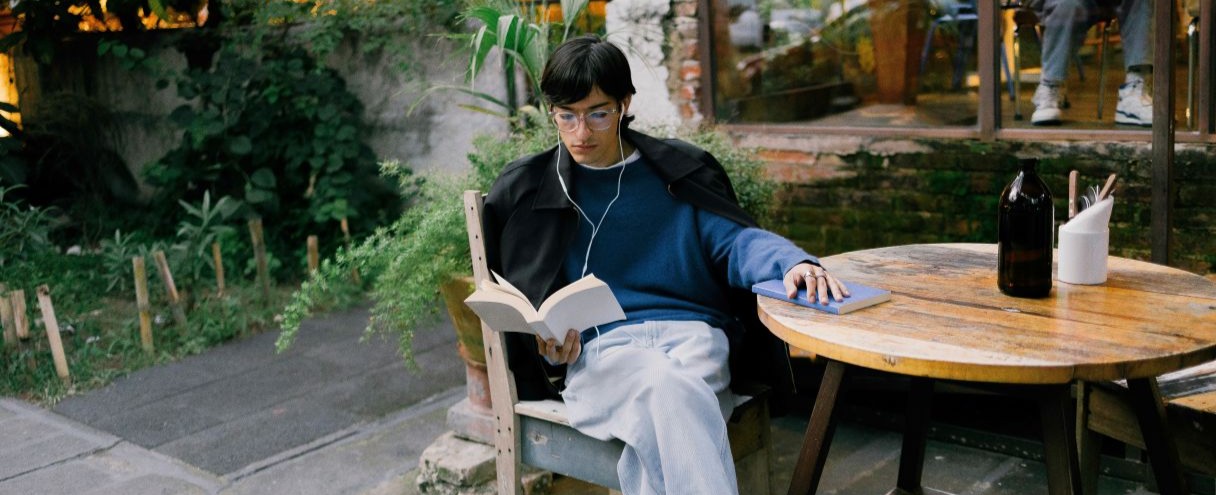Walk into almost any restaurant today, and you’ll see a mix that would’ve confused operators ten years ago.
At the counter, a solo diner scrolls through emails between bites, not lonely, just claiming a quiet 22 minutes before heading home. Behind her, a group of six is sharing mezze and taking turns filming the tableside pour-over cocktail (because if it doesn’t make the feed, did it even happen?). Two laptops glow in the corner, remote workers using the restaurant as a hybrid coworking space. And at the communal table, two separate couples end up chatting about the chef’s tasting menu, merging into a spontaneous eight-top.
This is 2026.
Dining is social, but not in any one predictable way. People want solitude and connection, spectacle and quiet, independence and shared experience, sometimes all in the same visit.
For operators, this isn’t a vibe shift.
It’s an operational shift, affecting everything from seating strategies to menu formatting to ticket pacing to POS logic.
Social dining trends aren’t just “how people eat together.”
They’re reshaping how restaurants run.
A funny misconception: solo diners aren’t avoiding people. They’re avoiding unpredictability.
In 2026, the solo dining trend has evolved into a form of intentional solitude. People want to eat alone, but surrounded by othersб, the warmth of the room without the obligation of interaction. This is why the solo dining experience has become a defining feature of modern hospitality.
Why solo dining is exploding
Operators point to three main drivers:
• Remote work created flexible schedules, pushing more people to eat out at odd hours.
• People want breaks from noise, responsibility, and attention — not necessarily from the world.
• Menus increasingly support quick, single-person experiences, from counter specials to limited-portion tasting bites.
What operators have changed
To accommodate this, restaurants are redesigning floor plans:
– More counter and bar seating
– Solo-friendly high-tops with built-in charging
– “Soft partitions” that signal privacy without isolating people
Many operators even design restaurants for solo diners, optimizing speed, accessibility, and compact comfort.
But the real shift is operational. Solo diners turn tables faster, but only if restaurants adapt.
Solo-friendly menus emphasize:
– single-portion plates
– no obligatory sides
– streamlined pacing
– easy, low-friction ordering
And that’s where technology enters the picture.
QR menus, handhelds, and POS-configured “quick order flows” reduce order friction so solo guests aren’t waiting behind a six-top for a server’s attention.
This trend isn't aesthetic, it’s throughput optimization dressed as hospitality.
Communal dining is not new, but the 2026 version isn’t about rustic benches and shared plates. It’s about engineered social energy.
Today’s communal dining comes in three flavors:
1. Food Halls as Community Hubs
Ten years ago, food halls were transitional spaces – pick your vendor, find a seat, leave when you’re done.
In 2026, they’ve become micro-communities, sometimes the only “third place” in a neighborhood.
Operators report:
– higher dwell times
– more repeat visits
– better weekday performance
– increased off-peak revenue
And yet, the multi-vendor model introduces operational complexity:
mixed-ticket group orders, shared pickup areas, variable prep times, and dynamic seating turnover.
2. Modern Supper Clubs
Ticketed dinners, chef’s tables, theme nights, all designed for strangers who want to eat as a group without the awkward small talk.
The social structure is built in.
Operationally, this requires:
– pre-scheduled menus
– batch-fire strategies
– POS support for event menus
– integrated prepayment systems
– table pacing that’s synchronized, not customer-driven
3. Communal Booths and “Micro-Gathering” Spaces
Instead of giant 12-person tables, restaurants now offer semi-private social spaces: booths that seat 2–6 but encourage interaction between parties.
This is communal dining redesigned with boundaries, and it’s working.
One of the biggest shifts in social dining has nothing to do with seating and everything to do with menu identity.
Restaurants in 2026 often operate multiple concepts under one roof:
– A ramen bar and a cocktail bar sharing a kitchen
– A bakery that becomes a wine bar after 4pm
– A taco counter operating inside a sports bar
– Three virtual brands running alongside dine-in service
Social dining morphs into “choose your own experience”, even among the same group.
One person orders sushi from Concept A.
Another orders tacos from Concept B.
A third orders a cocktail from Concept C.
This flexibility attracts mixed groups, especially younger diners who negotiate food like playlists:
“I want this, you want that, let’s meet in the middle.”
But the operator reality?
This is a nightmare without the right menu logic.
It requires:
– multi-brand menus under one POS
– correct tax routing
– correct kitchen routing
– cross-brand modifier alignment
– delivery platform menu sync
– accurate prep-time coordination
– inventory deduction across concepts
Social dining becomes operational dining.
If the backend can’t handle it, the front-of-house chaos becomes visible quickly.
In 2010, cafés became the de facto coworking spaces.
In 2026, full-service restaurants are stepping into a similar role, not intentionally, but out of necessity.
This creates new patterns of micro social connections – quick interactions at the bar, shared coworking moments, strangers chatting at communal tables.
People linger longer.
They host informal meetings.
They stay for multiple dayparts.
They order lightly but consistently.
Operators might grumble about “campers,” but they’re also seeing the upside:
– off-peak hours are finally monetized
– beverage programs thrive
– check averages rise when guests stay 2+ hours
– operators can run “rolling menus” instead of fixed mealtimes
However, this shift demands new operational frameworks:
Menu modularity:
Breakfast → snacks → early dinner → shared plates → late-night bites
POS flexibility:
Multiple menus in a single shift
Dynamic pricing
Timed menus
Hybrid service (counter at day, server at night)
Seating flow logic:
Guests may enter as solo diners at 11am
Become coworking guests at 1pm
Host friends at 5pm
And end up participating in a tasting event at 7pm
This is no longer a “restaurant day.”
It’s a modular, fluid, multi-format hospitality cycle.
Restaurants spent two decades trying to fight people taking photos.
In 2026, many have stopped resisting, and started designing for it.
Guests aren’t trying to “show off their food.” They’re documenting interactive dining experiences.
This changes dining behavior dramatically:
– People order shareable spectacle dishes
– Timing of dishes becomes part of the show
– Staff become performers
– Visual plating influences purchase decisions
– Groups synchronize their ordering for shared moments
Operators report that social-media-driven groups:
– order more small plates
– order more cocktails
– have longer dwell times
– generate free marketing
– return for new “viral” items
But there’s a hidden operational cost:
- they break kitchen pacing.
- every dish becomes “a moment.”
- tickets bounce between stations.
- groups hold dishes to film them together.
- itchen display systems (KDS) must account for synchronized plating.
Operators who understand this are redesigning workflows around “timed batches” and “shared fire tickets.”
This is one of the most misunderstood shifts in social dining.
Communal dining is no longer tied to the restaurant.
In 2026:
– Friend groups host “delivery dinner parties”
– Multi-brand group ordering is the norm
– Delivery bundles replace traditional catering
– Virtual brands collaborate on shared menus
– POS systems handle multi-bag, multi-brand mixed orders
– Last-mile providers offer timed delivery windows for groups
Operators report that the biggest revenue spikes come from group delivery, not individual delivery.
It’s communal dining – exported.
This pushes operators to build menus and workflows specifically for:
– family-style boxes
– social bundles
– shared sides
– group cocktail kits
– time-coordinated prep
– temperature-stable dishes
– two-kitchen fulfillment (virtual + dine-in)
Delivery is no longer “anti-social.”
It’s becoming a new form of social dining, without walls.
The rise of social dining – in all its forms – means operators need to rethink both the dining room and their operational backend.
Here’s what smart operators are already doing:
a. Rethink Your Floor Plan
– Add counter seating
– Add semi-private group booths
– Add flexible communal spaces
– Design mixed-use zones for coworking + happy hour
b. Redesign Your Menu Structure
– Offer solo portions and group bundles
– Build modular menus for rolling dayparts
– Create shareable “moment dishes”
– Add group delivery packages
c. Rebuild Kitchen Workflows
– Adopt synchronized ticket firing
– Add prep rules for “social plates”
– Build stations around shared dishes
– Use KDS pacing for large groups
d. Make Technology Work Around Social Behavior
This is where operators (and POS resellers) see the biggest change:
– multi-brand menus
– multi-daypart menus
– multiple ordering flows
– dynamic kitchen routing
– shared-kitchen ticket logic
– delivery integrations
– group ordering logic
– real-time menu updates
Restaurants are no longer single-concept systems.
They’re ecosystems, with dining rooms that reflect a range of social behaviors.
The technology behind them must follow suit.
If there’s one truth emerging across restaurant formats, it’s this: People don’t want just one way to eat together. They want every way.
They want solitude that feels safe but connected.
They want communal energy without chaos.
They want experiences without pressure.
They want events without formalities.
For operators, the biggest opportunity in 2026 is to design for choice, not categories. Social dining isn’t returning to what it used to be. It’s expanding into multiple overlapping modes of connection.
Restaurants that embrace this, operationally and creatively, aren’t just following a trend.
They’re building the next decade of hospitality.
To learn about more insights from the industry (and not only), you can subscribe to KitchenHub newsletter.




